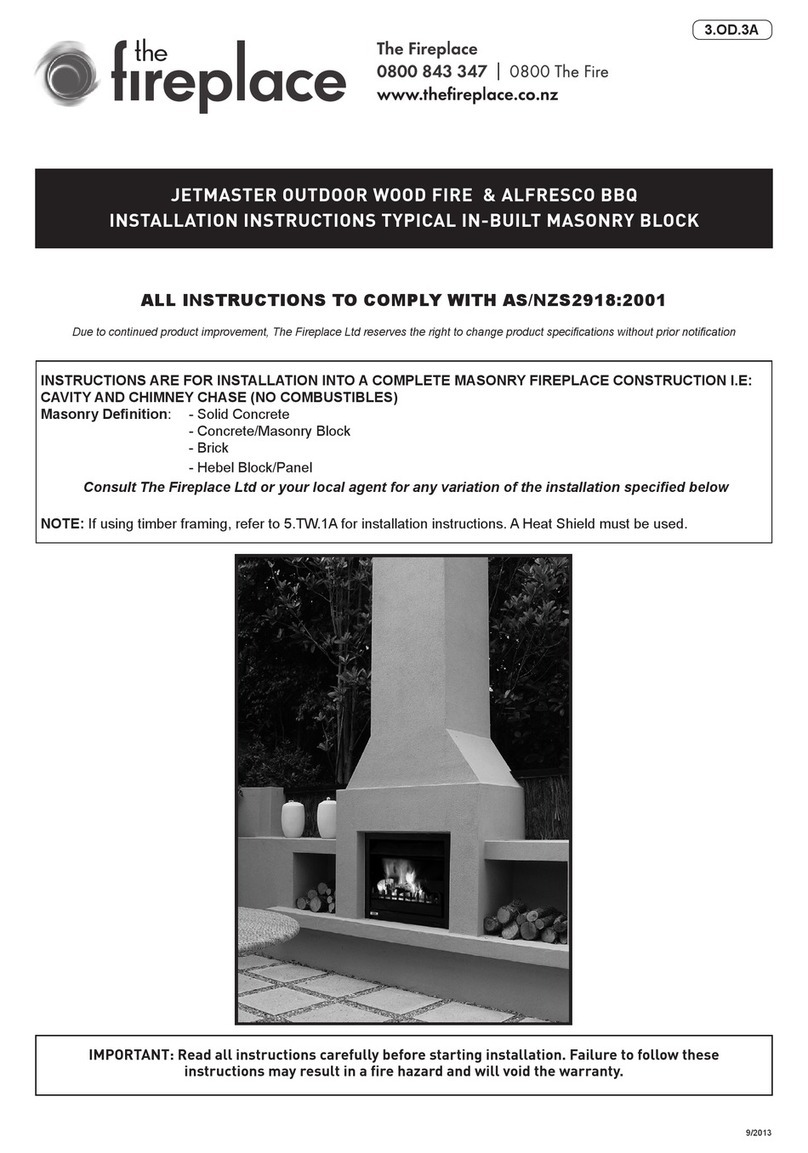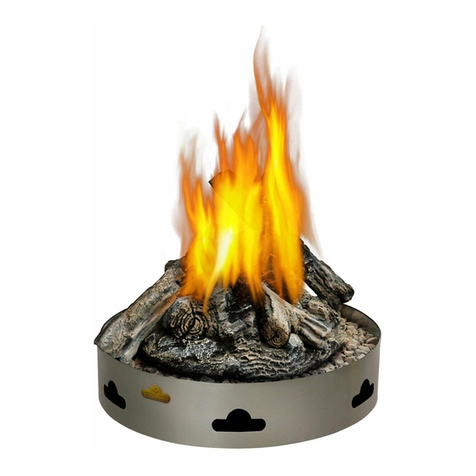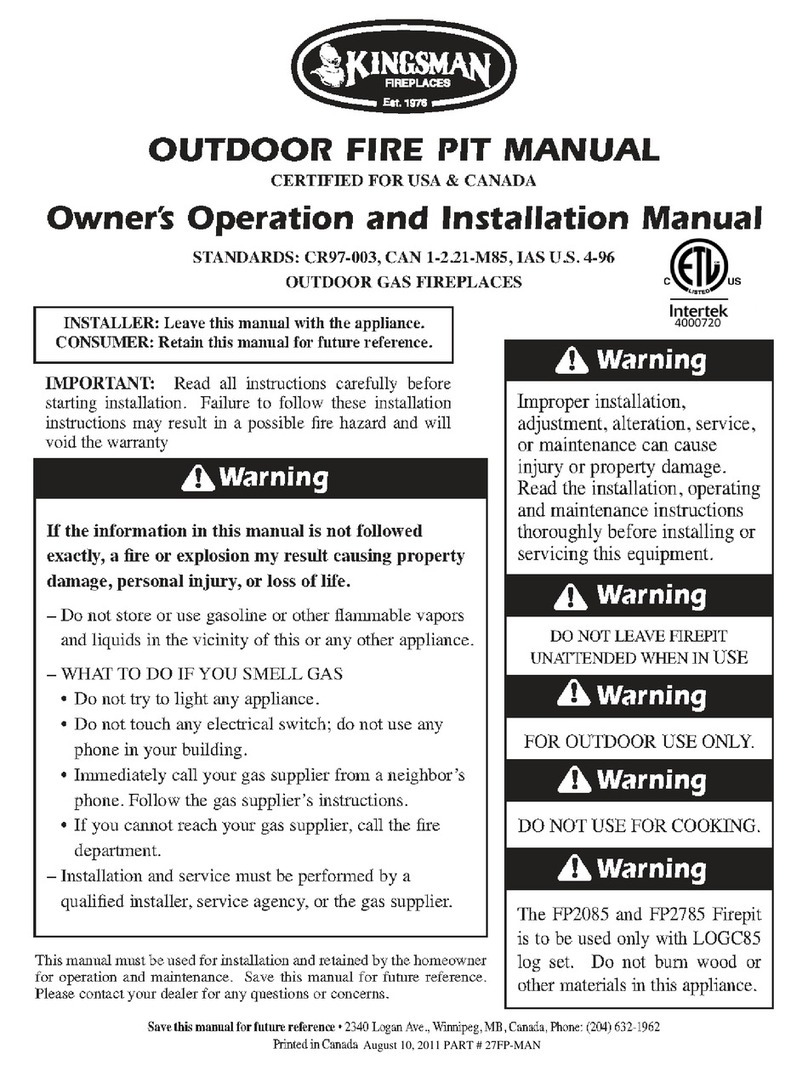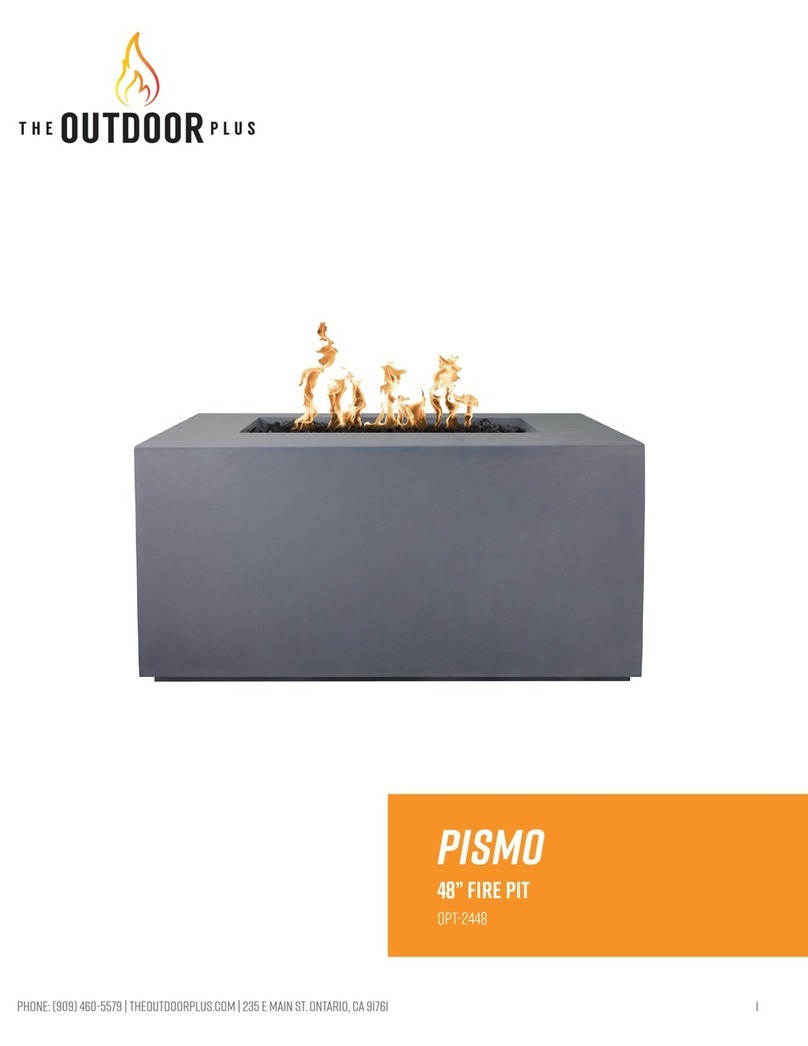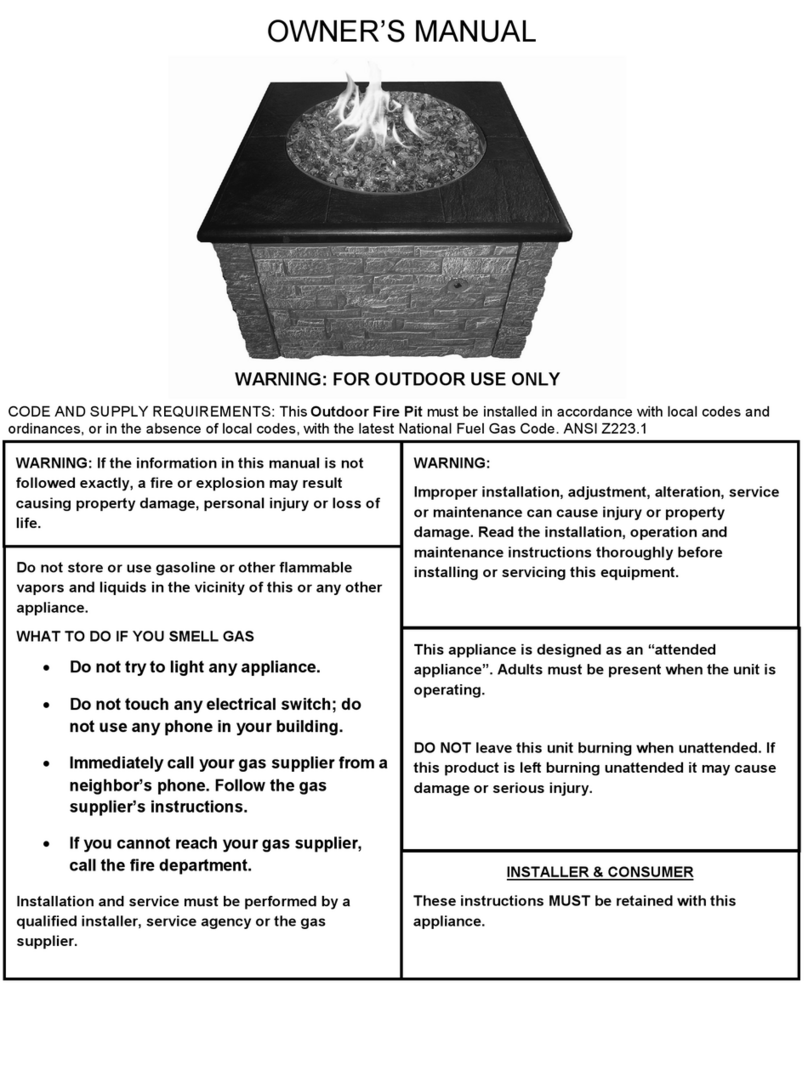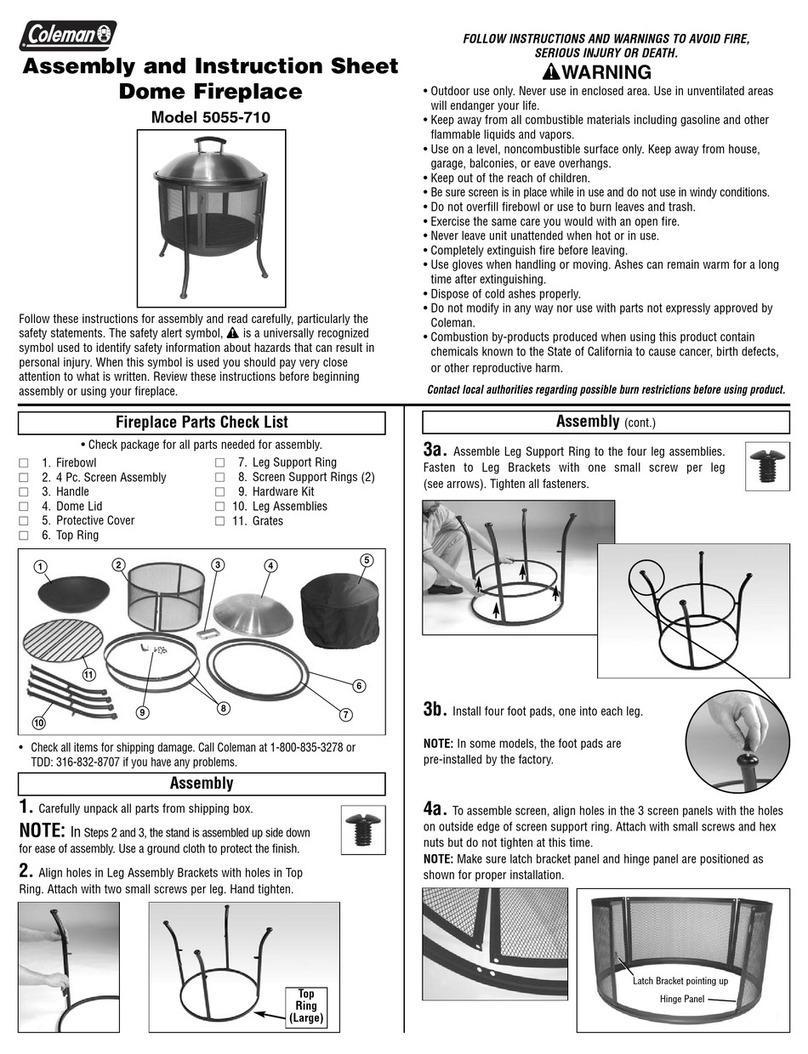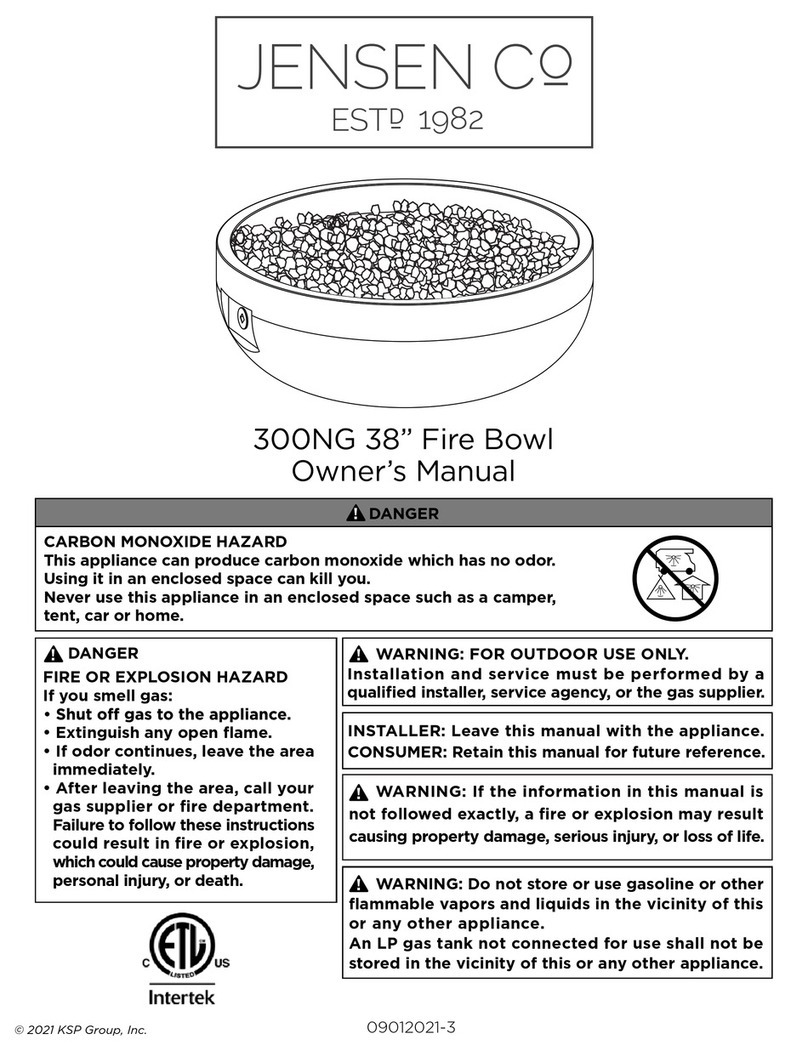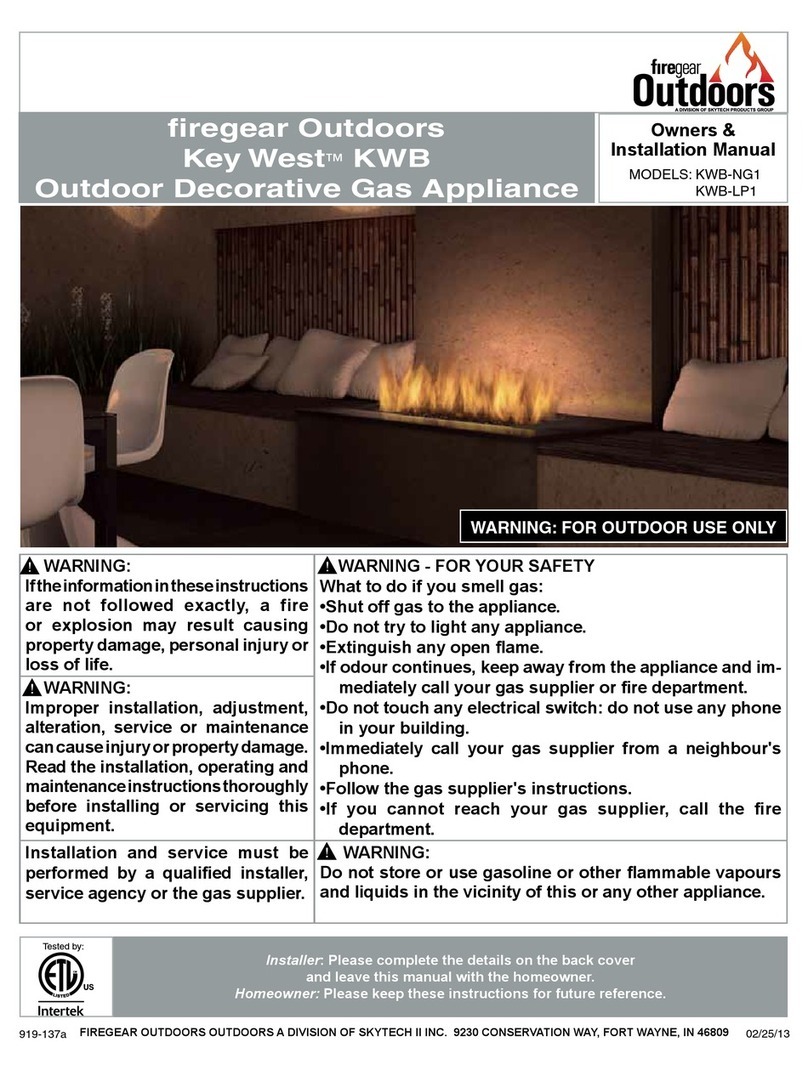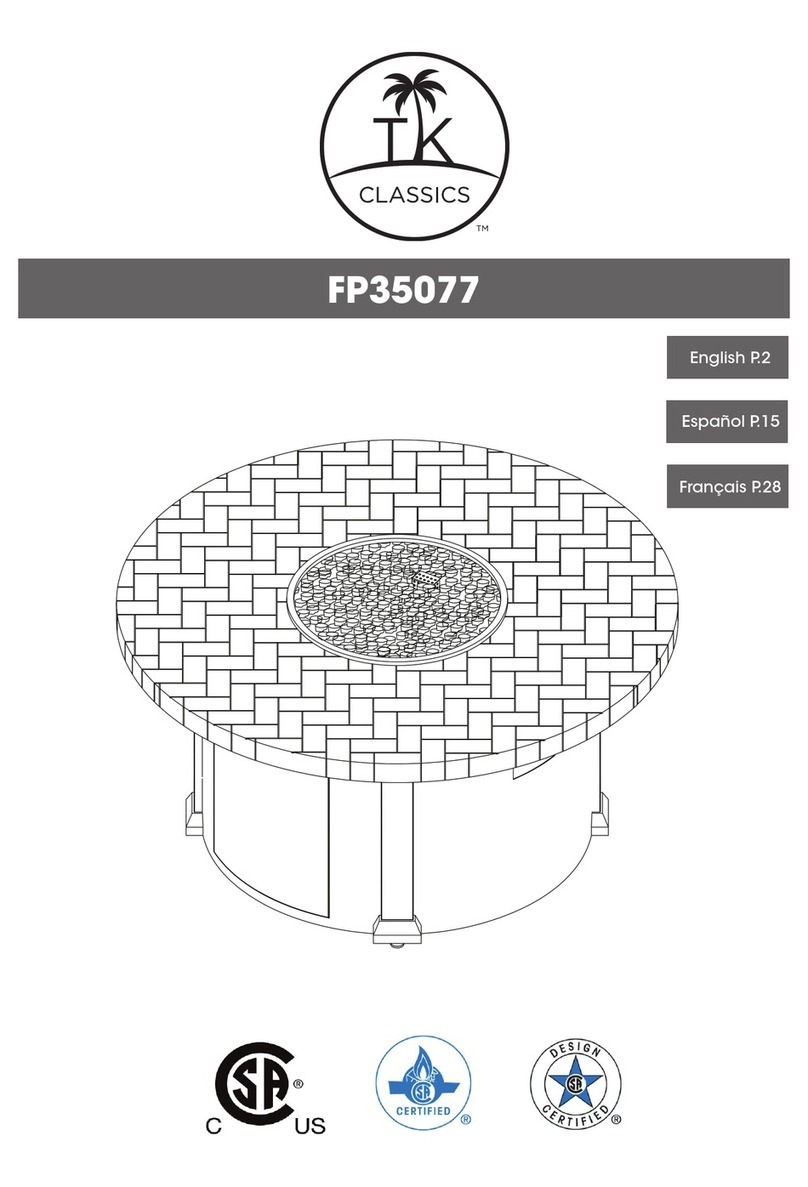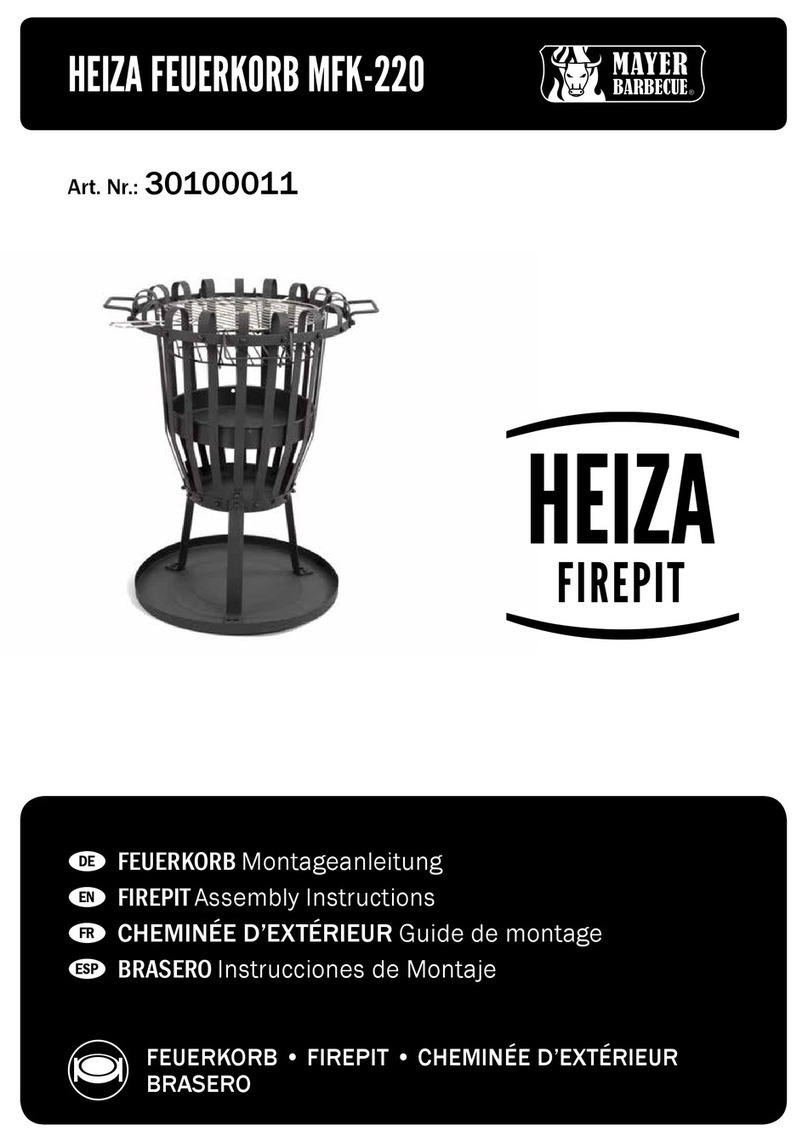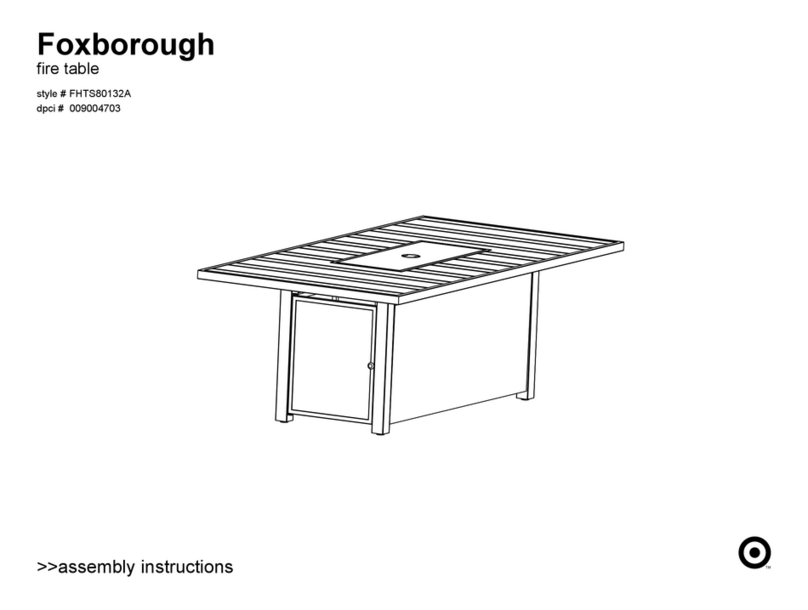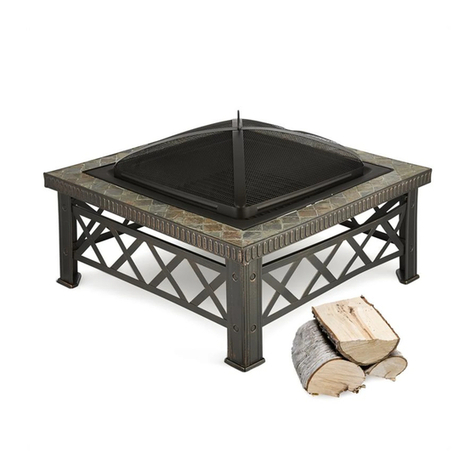
Concreteworks Made in California
est. 1991
..
concreteworks.com
FIRE TABLE CLEANING
• Dirt and water residue should be removed as soon
as possible. We recommend using a mild solution of
a nonabrasive cleaner such as Method All-Purpose
Natural Surface Cleaner. Spray the solution across the
surface and wipe down with a sponge or towel.
• We do not recommend the use of most natural
cleaners (which are often citrus based), as the cleaning
agent is typically highly acidic and can damage natural
materials.
• Do not use heavy, abrasive, bleach-based or
ammoniated cleaners. Use of such cleaners will wear
down the sealer.
• Wax your fire table periodically.Waxing your fire
table is a quick and easy process that will provide
additional protection. Wax once within 2 months of
the installation of your fire table and then every 2–5
months thereafter depending on use. We recommend
using Trewax Clear Paste Wax, which can be purchased
online and at many hardware stores including ACE
Hardware.
• When waxing the surfaces use the included sponge or
a soft, clean cotton cloth. Dampen the applicator with
clean water and wring out completely. With the sponge
or cloth, apply a thin layer of wax in circular motions
and in small manageable sections, preferably no larger
than 3 ft by 3 ft.
• Once applied remove the excess wax immediately with
a new/different, clean, dry cloth in the same circular
motion. Buffing works the wax into the natural
material. Move to the next section overlapping the last
section slightly. You should be able to see where the
wax has been applied, but a thick layer of wax should
not be applied or left on the surface at any time.
• Be aware, adding thicker layers does not add more
protection or speed up the waxing process.
• Do not apply in direct sunlight or in extreme heat.
Tinder Fire Tables
Care and Maintenance Information
Thank you for purchasing a Tinder Fire Table. Tinder Fire Tables are handmade using a custom engineered proprietary
concrete mix. They have been finished and sealed for exterior use. Concrete will react to its environment and naturally
weather and patina as it ages. Cleaning regularly and covering your fire table when not in use will protect it from rain,
snow, and adverse weather conditions.
RING & LAVA ROCK CLEANING
The burner ring and lava rocks should be cleaned
periodically. We recommend cleaning them least once a
year.
• If flames exhibit any abnormal shapes or behavior, or if
the burner fails to ignite properly, then the burner holes
may require cleaning.
• The burner can be cleaned by carefully removing the
lava rock media to allow access to burner. Always allow
proper cooling time before removing lava rocks.
• Use a brush and vacuum to carefully remove dust,
spider webs, and loose particles such as leaves from
concrete base, rocks, and fire ring itself.
• Take time to inspect the burner element. If there is
evidence of damage, the fire ring must be replaced
with a fire ring specified by the manufacturer.
